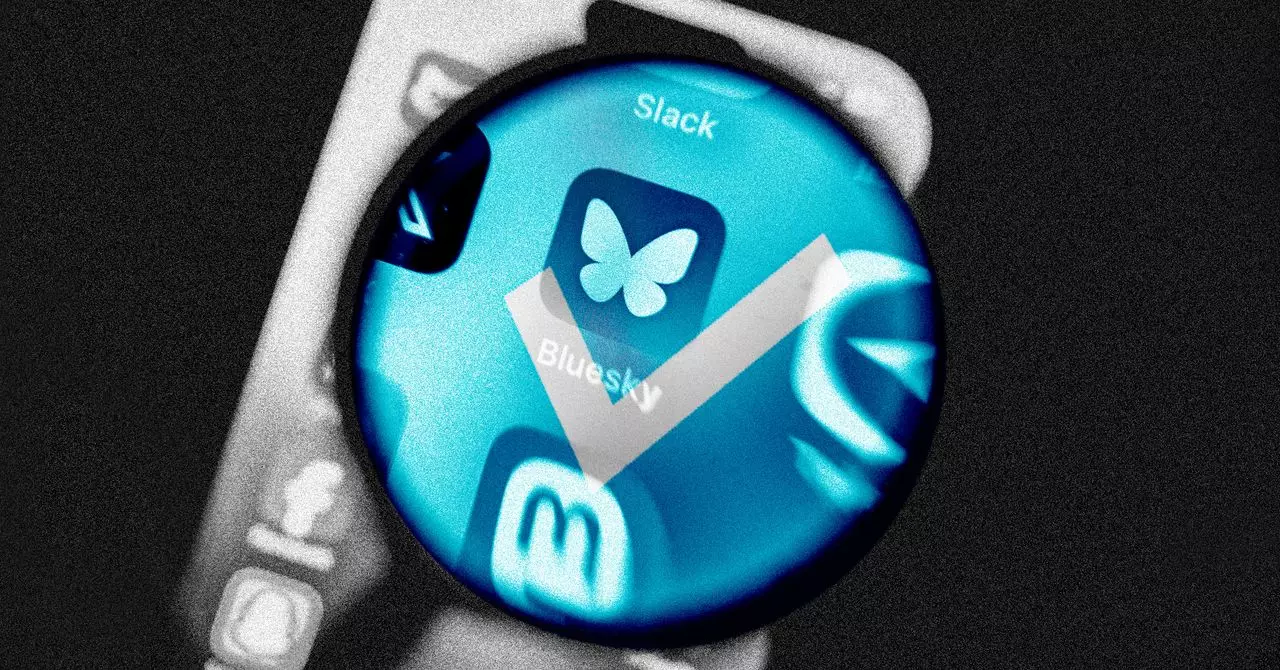In an era where digital identity is increasingly scrutinized, Bluesky’s recent move to implement a traditional verification system represents a significant leap toward building trust within its user base. The rise in impersonation incidents on social media platforms has necessitated mechanisms that substantiate the authenticity of accounts. Bluesky, with its strategic adoption of blue check marks reminiscent of those popularized by Twitter, is positioning itself as a reliable avenue for users seeking legitimate engagement and interactions. This shift towards a more streamlined verification process not only addresses the needs of discerning users but also reflects an understanding of the social media landscape’s complexities.
A Proactive Approach to Verification
Bluesky’s previous self-verification model allowed users to authenticate themselves by linking personalized domains, a system fraught with potential for misuse and ambiguity. Transitioning to a model where notable accounts are identified and verified by the Bluesky team allows for a more consistent and fair approach. As CEO Jay Graber articulated, the verification process will evolve gradually before introducing a public submission option, indicating an adaptable and user-friendly pathway to gaining verification. This tiered approach demonstrates a commitment to ensuring all users feel like they have a stake in the platform’s integrity.
Meeting the Demands of a Growing User Base
As the platform garners attention from celebrity users—such as former President Barack Obama—the urgency for a robust verification system grows. This is particularly crucial in a digital climate where misinformation spreads rapidly. Graber’s acknowledgment of the need to reduce fraud and impersonation sends a powerful message that Bluesky does not take user safety lightly. By prioritizing government officials, journalists, and prominent public figures in its verification process, Bluesky is not only safeguarding its reputation but also reinforcing the concept that reputable voices deserve recognizable credibility.
The Blue Check: More Than a Symbol
It’s worth noting that while adopting a blue check system may seem derivative, the established visual cue serves a critical purpose in differentiating genuine accounts from potential impersonators. The recent changes in Twitter’s verification protocol have caused confusion among users, diluting the value of the blue check as a marker of authenticity. By reinstating the check in a more trustworthy framework, Bluesky capitalizes on the visual trust factor associated with verified accounts. This strategic positioning promises to attract users who not only want to engage with known entities but also feel secure in their online interactions.
Trust in Third Parties: The Trusted Verifier Model
An intriguing aspect of Bluesky’s verification initiative is its introduction of the “trusted verifier” category. By empowering specific organizations—such as The New York Times and WIRED—to confer verified status on accounts, Bluesky is fostering a culture of collaborative trust. This model acknowledges the limitations of a centralized system, allowing for decentralized verification that could enhance credibility across the platform. Users tapping on a blue check mark will not only see the verified status but can also trace the verification lineage back to credible sources. This layered approach elegantly combines central and decentralized verification methodologies, setting a precedent in social media governance.
A Testament to Decentralization Goals
Bluesky’s decision to incorporate both direct verification and third-party affirmations aligns seamlessly with the platform’s core philosophy of decentralization. It acknowledges the dynamics of informality that define social media while providing a structured response to calls for legitimacy. With a small team of under 25 employees, Bluesky is navigating the challenges of rapid growth while maintaining a commitment to user security and confidence. This dual-layered verification not only enhances the user experience but also serves as a strategic maneuver to manage growth effectively.
In this critical juncture for Bluesky, the new verification system signifies more than just an operational change; it’s a bold statement of trustworthiness and a commitment to combating digital impersonation. As social media evolves, platforms like Bluesky must continuously innovate to ensure user safety and promote authentic connections. It is an exciting time for users eager to engage in a space that prioritizes their digital well-being. The introduction of formal verification practices may very well define Bluesky’s trajectory as a leader in fostering a trusted social media experience.

